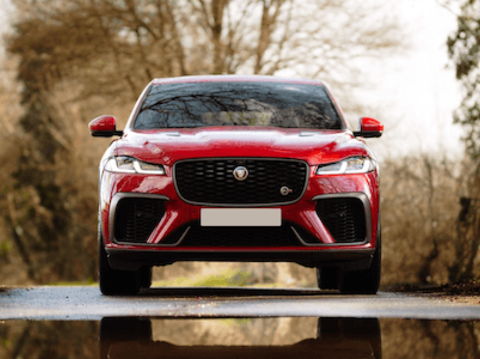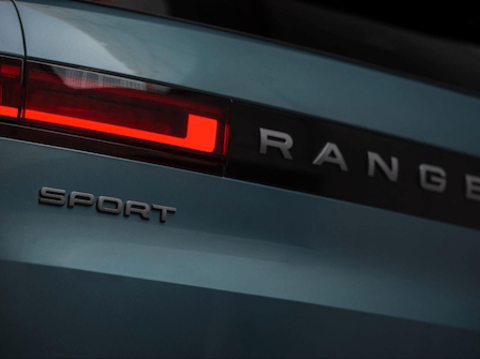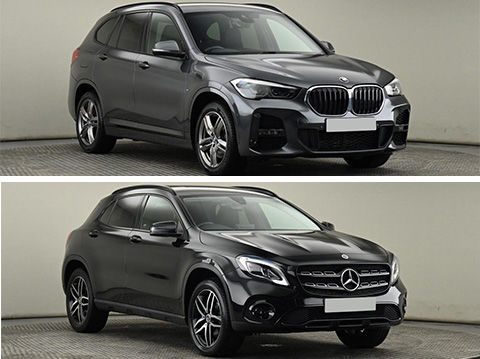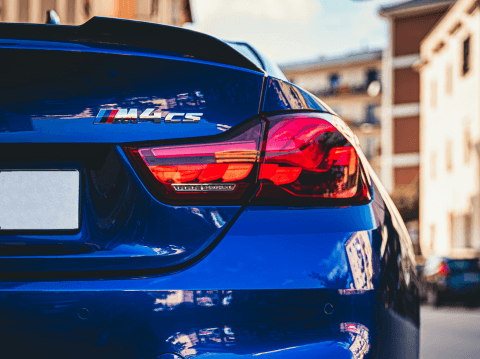Range Rover Evoque vs Jaguar E-Pace
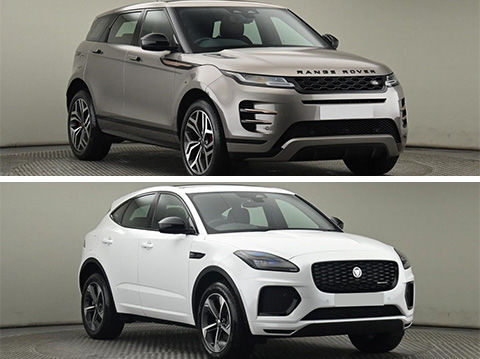
Choosing between the Range Rover Evoque and the Jaguar E-Pace involves weighing up two compact SUVs from established British manufacturers. Both offer a strong mix of technology, comfort and hybrid efficiency, but their differences in design, driving style and features may appeal to different types of drivers. This comparison looks at key areas such as design, interior, technology, performance and practicality to help you make an informed choice.
Design and Appearance
The Jaguar E-Pace presents a sporty and modern design with a coupe-style profile and short overhangs. Its styling gives it a distinctive road presence without appearing too bold. The Range Rover Evoque follows a more conservative and angular design approach. It retains the brand’s recognisable proportions, offering a clean and consistent look that suits both city and rural environments.
In terms of exterior practicality, both cars are compact enough for urban driving and tight parking situations while still offering decent road visibility and a raised driving position. Neither model feels oversized, and both have subtle design elements that reflect their brand identities clearly.
Interior and Comfort
Inside, the E-Pace features materials and finishes that give the cabin a premium feel. The Ebony and Morzine headliner provides a dark and uniform appearance. Controls are placed logically, and the digital display is clear and easy to operate. Seating is supportive, and the overall design focuses on creating a space that feels familiar and functional.

The Evoque also uses an Ebony headliner, creating a similar atmosphere. The layout is neat and the quality of materials is consistent throughout. Its integrated navigation system and intuitive controls make it easy to get used to. While both cars offer five seats, the rear of the Evoque may feel slightly more enclosed due to its sloping roofline. Legroom and headroom are comparable between the two, though taller passengers might find the E-Pace marginally more accommodating in the back.
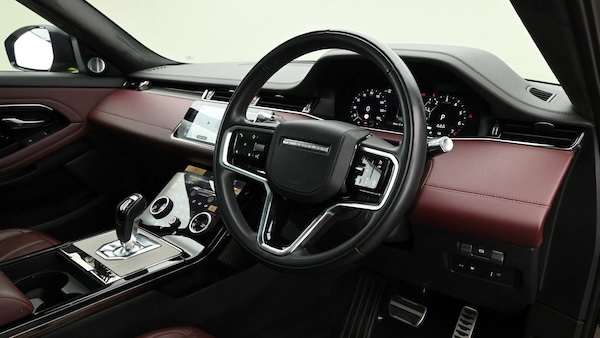
Technology and Infotainment
The E-Pace comes with an 11.4-inch central touchscreen featuring Jaguar’s Pivi Pro infotainment system. It supports Apple CarPlay, Android Auto and includes voice control, a trip computer and real-time navigation. Driver assistance features include adaptive cruise control, blind spot assist, rear collision and traffic monitors, lane keep assist, and an emergency services call function.
The Evoque is fitted with a 10-inch touchscreen and a second lower touchscreen for additional controls. Like the E-Pace, it uses the Pivi Pro system with Apple CarPlay and Android Auto integration. It also includes adaptive cruise control, blind spot assist, and driver condition monitoring. Other practical features include a rear-view camera, parking sensors, and traffic sign recognition with an adaptive speed limiter.
While both vehicles offer a very similar list of safety and driver convenience technologies, the E-Pace benefits from a slightly larger and more integrated main display. However, the Evoque’s two-screen layout provides added flexibility in how information is shown and controlled.
Performance and Driving Experience
Both the E-Pace and Evoque use small-capacity plug-in hybrid petrol engines paired with automatic transmissions. The E-Pace engine delivers responsive handling and makes good use of Jaguar’s Drive Control and adaptive surface response systems. The result is a composed drive that adjusts to different road conditions without needing input from the driver.
The Evoque’s hybrid system is tuned for smoothness and stability. Its steering and ride are designed to handle a mix of city streets and rougher roads, offering a slightly more balanced driving experience. While neither model is designed for extreme off-road use, both perform well in varied conditions, from rural roads to congested urban areas.
Fuel efficiency and emissions are comparable, with the E-Pace producing lower CO2 emissions but slightly higher fuel economy on paper. Real-world results will depend on individual driving habits and conditions.
Practicality and Features
Both cars are equipped with features that are useful in everyday driving. Heated front windscreens and heated washer jets help with winter visibility. Each model also includes electric power-assisted steering, emergency call systems, parking aids, and lane assist technologies.
The E-Pace includes extra technology such as a rear traffic monitor, voice control system, and sport shift selector. The Evoque adds features such as a rain sensor and a deployable touchscreen. These small differences may influence which model is better suited to your preferences, especially if you value specific tools or systems.
Boot space and interior storage are practical in both vehicles, though neither offers class-leading capacity. They are well-suited to families or individuals who require occasional luggage space rather than large load areas on a regular basis.
The Jaguar E-Pace and Range Rover Evoque both offer a comfortable driving experience, efficient hybrid performance, and a full suite of modern safety and infotainment features. The E-Pace is slightly more dynamic in terms of appearance and handling, while the Evoque provides a more understated design with a focus on all-round usability.
For drivers seeking a sportier interior with a larger display, the E-Pace may be the preferred option. Those who want a more classic SUV feel with refined road manners may lean towards the Evoque. Both are solid choices that reflect strong build quality and thoughtful design, making either a suitable option for daily use.

